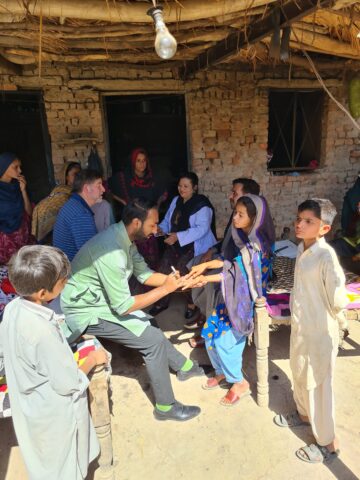
Leprosy in Sindh, Pakistan
In the Pakistani province of Sindh, it is not often that medical personnel are in the area – especially not in the more remote villages. And this despite the fact that Sindh is a highly endemic area as far as leprosy is concerned. So, when a medical delegation, accompanied by DAHW Global Health Advisor Anil Fastenau among others, visited a small village in the province, word quickly spread among the residents – and up to a hundred people gathered to ask for medical advice.
The team examined around forty of them more closely, many of them children. One teenage boy was diagnosed with leprosy on the spot. Treatment was started immediately, and, with a bit of luck, the impairments are reversible.
However, the team was particularly impressed by a twelve-year-old girl, the boy’s cousin. She had heard some health education messages some time ago and realized that she had a skin patch with loss of sensation, which she had tested herself. She immediately went to a clinic, was diagnosed, received treatment, and will now have no disabilities.
So, the delegation realized: leprosy exists in this village. For this reason, certain contact persons were offered prophylaxis, which was very gladly accepted. This significantly reduced the risk of these people also contracting the disease. But the experience of this visit also shows that the messages about leprosy are getting through to the people. They are effective and they motivate those affected to seek medical aid. And in this way – with the support of our donors – we can succeed in eliminating leprosy throughout the country and to reach our goal of zero leprosy.